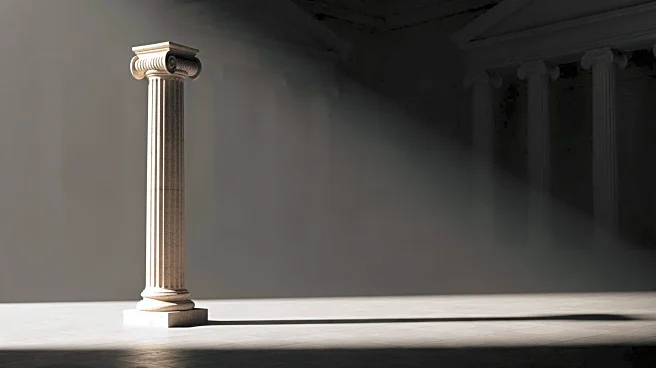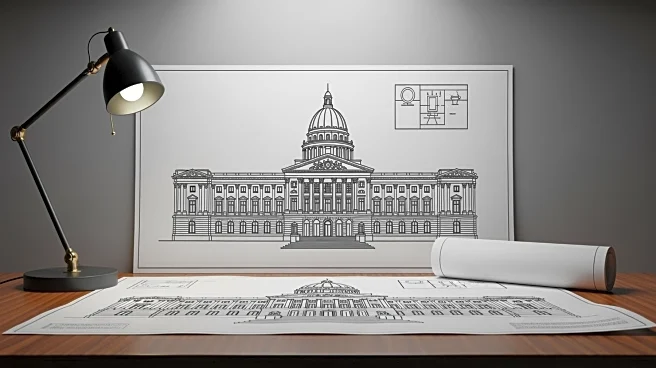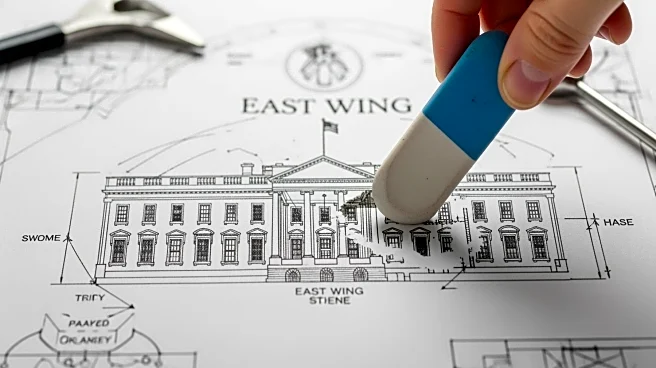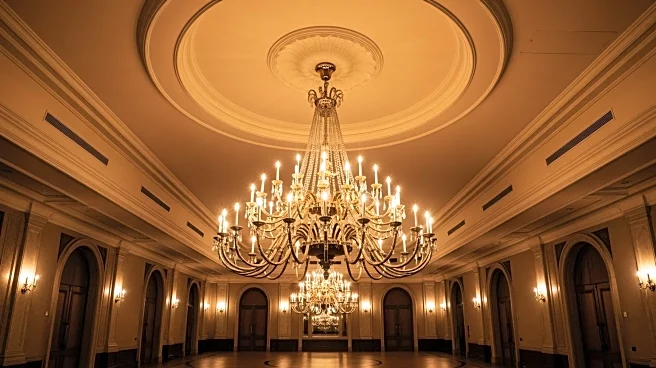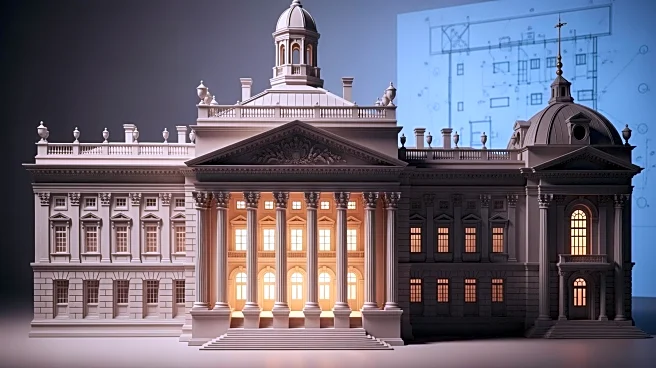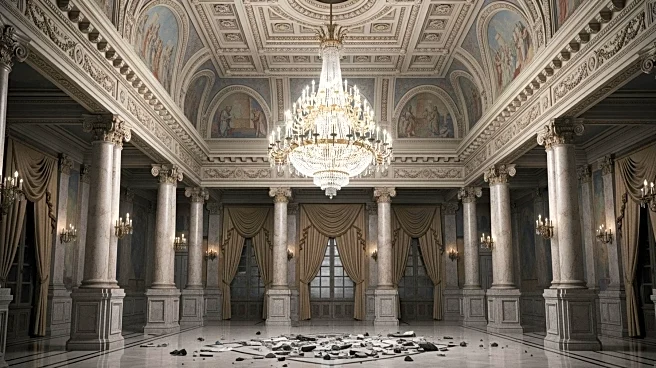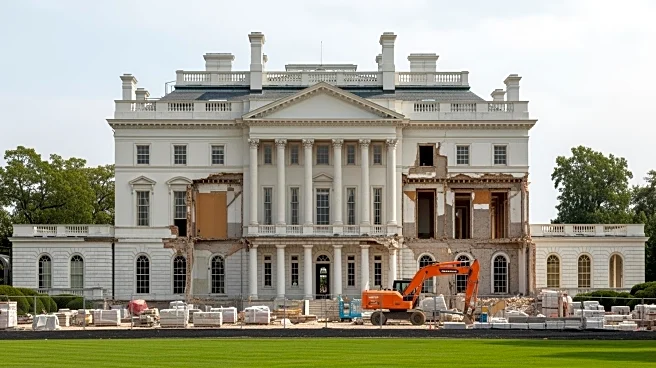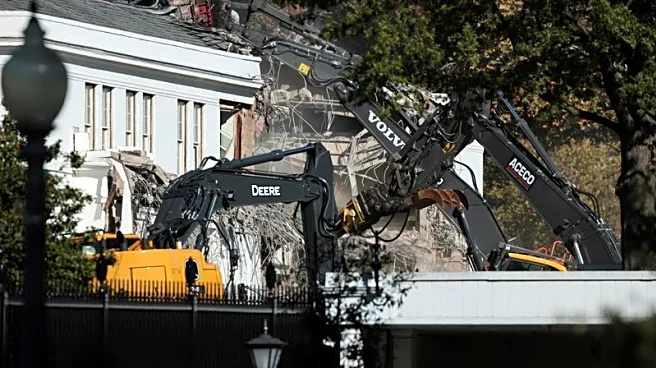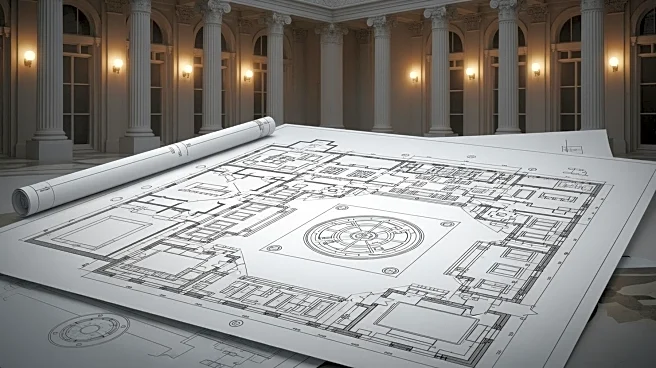What's Happening?
The East Wing of the White House is expected to be demolished as soon as this weekend, according to sources. This development is part of President Trump's plans to construct a new ballroom. Priya Jain,
chair of the Society of Architectural Historians and an associate professor at Texas A&M University, has commented on the architectural implications of this decision. The demolition has sparked discussions about the historical and architectural significance of the East Wing, which has been a part of the White House complex for decades.
Why It's Important?
The demolition of the East Wing is significant as it involves altering a historic part of the White House, which could have implications for its architectural integrity and historical value. This move has drawn criticism from historians and preservationists who argue that such changes could undermine the cultural heritage of the White House. The decision also reflects President Trump's approach to modifying government properties, which may set a precedent for future administrations. The construction of a new ballroom could also impact the functionality and aesthetics of the White House complex.
What's Next?
The demolition is expected to proceed this weekend, but it remains to be seen how preservationists and historians will respond. There may be legal challenges or public campaigns to halt or modify the demolition plans. Additionally, the construction of the new ballroom will likely attract further scrutiny regarding its design and impact on the White House's historical landscape.
